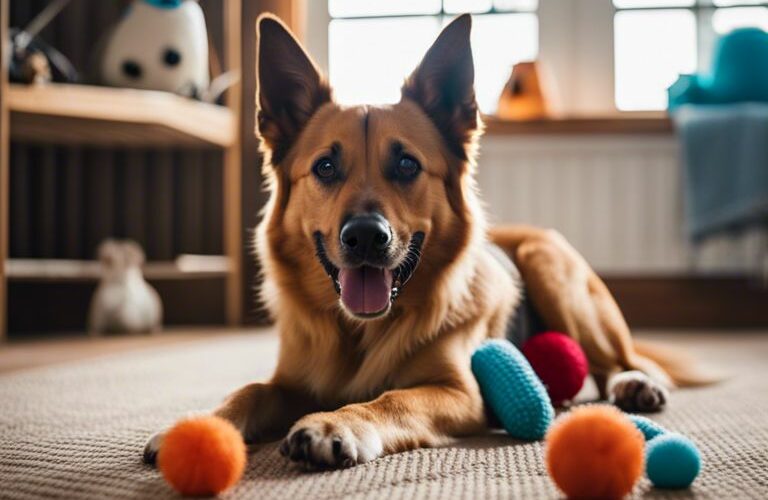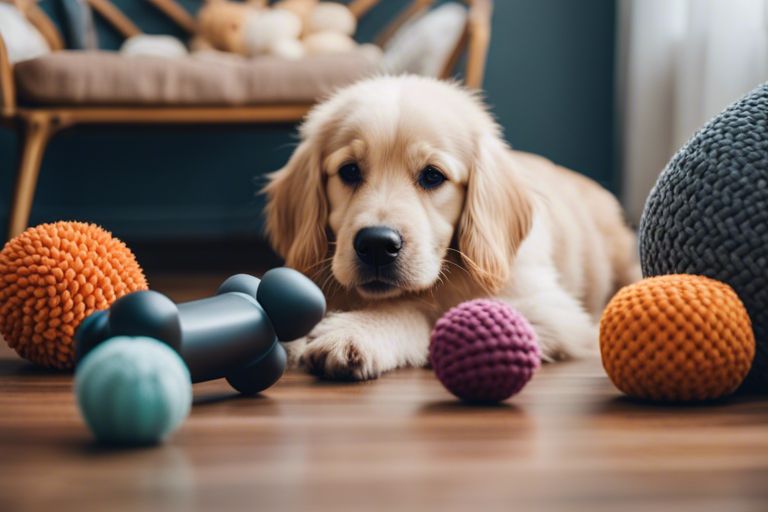Felicitations to all dog owners who understand the importance of selecting the appropriate texture for their canine companions’ toys. It is imperative that the textures of the toys are not only enjoyable for your pooch but also safe. The wrong texture can cause irritation or even potential harm to your furry friend. When choosing toys, it is crucial to consider the durability, safety, and appropriateness of the texture for your dog’s size, breed, and play style. It’s necessary to avoid toys with sharp edges, small parts, or easily destroyable materials that can be hazardous to your pet. By being mindful of the texture of your dog’s toys, you can provide them with safe and enjoyable playtime.
Table of Contents
Key Takeaways:
- Consider your dog’s preferences: Take into account your dog’s breed, age, and chewing habits to determine the right texture for their toy.
- Choose durable materials: Look for toys made of strong, non-toxic materials such as rubber or nylon to ensure they can withstand your dog’s chewing.
- Inspect the texture: Avoid toys with sharp edges or small parts that can be easily chewed off and ingested by your dog.
- Test the texture: Allow your dog to interact with the toy to see if they are comfortable with the texture and if it meets their chewing needs.
- Monitor toy condition: Regularly check the toy for signs of wear and tear, and replace it if it becomes damaged to prevent any potential hazards to your dog.
Understanding Dog Chewing Behaviors
Obviously, one of the most common behaviors of dogs is chewing. This natural instinct is not only a form of play and entertainment for them, but it also serves as a way to relieve stress and anxiety. Understanding the different chewing behaviors of dogs can help you choose the right toys with the appropriate texture to keep them engaged and satisfied.
Puppies vs. Adult Dogs: Textural Needs
Puppies have a strong need for chewing as they are teething and exploring the world around them. They tend to enjoy softer, more pliable textures to soothe their sore gums and satisfy their curiosity. On the other hand, adult dogs have fully developed jaw strength and may need tougher textures to keep them engaged and prevent them from destroying the toy too quickly.
Impact of Chewing Habits on Toy Selection
Chewing habits play a crucial role in selecting the right texture for your dog’s toy. Poor toy choices can lead to ingestion of small parts, causing choking hazards and digestive issues. On the contrary, toys with the right texture can help maintain good dental health, satisfy their natural instincts, and keep them mentally stimulated.
With the understanding of your dog’s specific chewing behaviors and needs, you can select toys with appropriate textures that are safe, durable, and engaging, ensuring a happy and healthy playtime for your canine companions.
Materials and Textures Explained
Even though it may seem like a trivial detail, the material and texture of your dog’s toys can have a significant impact on their playtime experience. Understanding the different materials and textures available will help you choose the right toys for your furry friend.
Common Dog Toy Materials
For dog owners, it’s important to be aware of the most common materials used in dog toys. Rubber and plastic are popular choices for their durability and easy cleaning. Rope and fabric toys provide a different texture and are great for interactive play and chewing.
Pros and Cons of Different Textures
Textures play a crucial role in determining your dog’s enjoyment of their toys. Understanding the pros and cons of different textures can help you make informed decisions. Here are some important factors to consider:
| Textures | Pros and Cons |
| Soft Plush | Provides comfort, but may pose a choking hazard if torn |
| Rough Rope | Great for dental health, but may fray and cause ingestion issues |
| Smooth Plastic | Durable and easy to clean, but can be hard on the gums |
The pros and cons of each texture should be carefully evaluated before selecting toys for your dogs. Understanding the potential risks and benefits will help ensure a safe and enjoyable playtime experience for your beloved pets.
Assessing Your Dog’s Texture Preference
For dog owners, understanding their dog’s texture preference is crucial to selecting the right toys. Different dogs have different preferences when it comes to the texture of their toys. It’s important to assess your dog’s preferences to ensure they enjoy and engage with their toys. Behavior Management – Enrichment and Foraging Toys can also play a key role in keeping your dog entertained and mentally stimulated.
Observation Techniques
Dogs communicate their texture preferences through their actions and behaviors. Start by observing how your dogs interact with different textures. Observe if they show more interest in soft plush toys, rubber toys, or sturdy nylon toys. Take note of how they chew, toss, and carry their toys to identify what textures they prefer.
Additionally, pay attention to your dog’s body language and vocalizations when playing with different toys. Dogs may show signs of discomfort or disinterest if a certain texture doesn’t appeal to them. These observations will help you understand what textures your dogs prefer and enjoy.
Conducting Safe Toy Trials
Trials are essential for determining your dogs’ texture preferences without risking their safety. When conducting toy trials, introduce your dogs to a variety of textures in a controlled environment. Supervise their interactions closely to ensure their safety and monitor their responses to different textures.
A gradual and systematic approach to introducing different textures will help you assess your dogs’ preferences. Offering a variety of textures in safe toy trials will help you determine the textures that your dogs enjoy and feel comfortable with.
Caring for and Maintaining Textured Toys
Not all dog toys are created equal, and it’s important to take proper care of your dog’s textured toys to ensure their longevity and safety. Regular maintenance and cleaning can make a big difference in the lifespan of these toys, as well as in the health and well-being of your furry friend.
Cleaning and Inspection Routines
On a regular basis, it’s important to inspect your dog’s textured toys for any signs of wear and tear, such as fraying or small parts coming loose. It’s also crucial to clean these toys regularly to prevent the buildup of bacteria and dirt, which can be harmful to your dog’s health.
When cleaning, make sure to use mild soap and warm water, and thoroughly rinsing and drying the toys before giving them back to your dog. Additionally, consider using a specially formulated toy cleaner to ensure that your dog’s toys are free of harmful bacteria and germs.
When to Replace Textured Toys
When it comes to textured toys, knowing when to replace them is crucial for your dog’s safety. Over time, these toys can become worn down and potentially pose a choking hazard for your dog. It’s important to replace these toys as soon as you notice any signs of wear and tear, such as loose threads or small parts coming off.
The age of the toy, the frequency of use, and the size and strength of your dog are all factors to consider when determining when to replace textured toys. As a rule of thumb, it’s better to be safe than sorry when it comes to your dog’s toys.
Ensuring the Right Texture for Your Dog’s Toy
Presently, it is crucial to select the appropriate texture for your dog’s toys to ensure safety and satisfaction. By carefully examining the toy’s material and considering your dog’s breed and chewing habits, you can make a well-informed choice. Avoid toys with hard, sharp or splintering textures as they pose a risk to your dog’s teeth. Instead, opt for materials like rubber, nylon, or plush that are durable and provide a satisfying chewing experience. Regularly inspecting toys for wear and tear will also help maintain the right texture and prevent any potential hazards to your furry friend.
FAQ
Q: Why is it important to ensure your dog’s toy has the right texture?
A: The right texture in a dog’s toy is important for their safety and enjoyment. Proper texture can prevent choking hazards and ensure the toy is durable enough to withstand your dog’s chewing habits.
Q: What are the characteristics of a toy with the right texture for a dog?
A: The right texture for a dog’s toy should be sturdy and non-toxic, with no small parts that could break off and be ingested. It should be soft enough to prevent injury to your dog’s mouth, but tough enough to withstand rough play.
Q: How can you ensure your dog’s toy has the right texture?
A: You can ensure your dog’s toy has the right texture by carefully examining the material it is made of, checking for any small parts that could break off, and considering your dog’s size and chewing habits when selecting a toy. It’s also important to choose toys that are specifically designed for dogs and are labeled as safe and durable.











Add comment